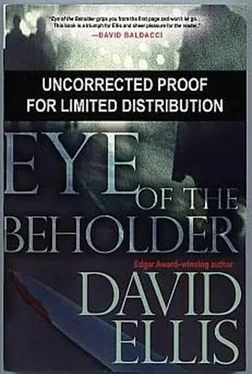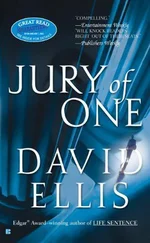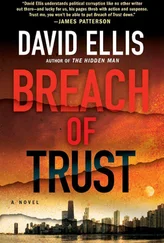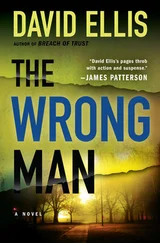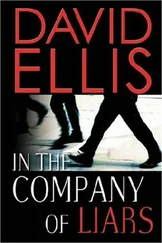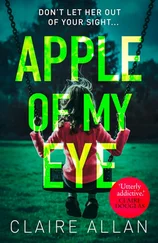They had the murder weapons: The knife used to slice open Ellie Danzinger’s chest and slit Angie Mornakowski’s throat-complete with traces of their blood and Burgos‘s, and with Burgos’s prints all over them. The glass container that held the sulfuric acid-battery acid-used to kill Jackie Davis, with several of Burgos’s prints. And the gun that blew out the back of Cassie Bentley’s skull, with Burgos’s latents wrapped all around the handle and barrel.
They’d found semen matching Burgos’s blood type in the vaginal cavity of every victim. They’d found the victims’ clothes and identification, not to mention blood and hair, in his house. They’d found two large body bags in his basement that, between them, had traces of all of the victims inside. They could put Angela Mornakowski and Sarah Romanski into a blue Chevy Suburban-just like the one Burgos drove-on the nights they went missing. They had Jackie Davis’s thumbprint on his rearview mirror and a latent from Maureen Hollis’s right hand, index finger, on the dashboard. They could put each of the hookers in that truck.
The physical evidence was simply overwhelming.
“Things are looking good, man,” said the county attorney. “Smile once.”
It was true that, by and large, things had gone quite well. Last week, Burgos’s court-appointed attorney, Jeremy Larrabee-a lifer in the public defender’s office, a wild-eyed guy with colorful suits, a ponytail, and the Bill of Rights surgically implanted to his chest had taken his best shot and lost. Larrabee had moved to suppress Terry Burgos’s statements to the police, where he had identified each victim by name and all but confessed to their murders. The argument was that Burgos hadn’t received Miranda warnings. Judge Albert Donaghue had ruled that Miranda warnings weren’t required because Burgos hadn’t been in custody-in the tape-recorded conversation, Detective Joel Lightner had clearly informed Burgos that he was free to leave at any time. Larrabee tried to argue that the cops baited Burgos by keeping him over the lunch hour, and then offering him his favorite meal-tacos-if he stayed. Judge Donaghue wryly noted that he had read over the Constitution and the framers hadn’t mentioned anything about free Mexican food.
After the state appellate and supreme courts denied Burgos an immediate appeal, it was clear that Burgos’s incriminating statements would be introduced at trial. Just yesterday, the day after the supreme court denied the appeal, Terry Burgos entered a plea of not guilty by reason of insanity to six counts of first-degree murder.
This case was no longer about proving Burgos committed these crimes. This case was now about proving that Burgos was sane when he did so.
“Sounds like you have the prostitutes locked down,” Mullaney said.
Riley nodded. Not only could they put each of the hookers in the truck; they also had learned that Burgos was acquainted with each of them. Other prostitutes had easily identified Terry’s photograph as a regular customer with Angie, Jackie, Sarah, and Maureen, though when asked none of them knew the name “Terry Burgos.”
Burgos had always called himself “Tyler Skye.”
The time frame worked, too. The police had been working under the assumption that the women had been murdered in the order they’d been placed in the auditorium basement. The medical examiner had backed that up, more or less, and of course the manner of death had matched the song lyrics sequentially.
From what they knew, the evidence also supported this chronological theory. Ellie Danzinger, the first woman killed, had ordered food into her apartment at 5:35 P.M. on Sunday, June 18, so she was at least alive at that time. From her answering machine, they knew that she had received five phone messages, beginning at 10:15 P.M. that same night, that Ellie had never checked, much less returned. So the operating theory was that Burgos had broken into her condo sometime between those time intervals, beaten her, and abducted her.
And now they had been able to pinpoint the last-known whereabouts of every prostitute, too, confirming that Burgos had killed these women on consecutive days. Angie Mornakowski on Monday, June 19, between nine and nine-thirty; Jackie Davis on Tuesday night, around ten-thirty; Sarah Romanski on Wednesday night, around ten; and Maureen Hollis on Thursday, again around ten.
“Cassie Bentley is more difficult,” Riley said. It was ironic, he thought, that hookers would be easier to pinpoint in terms of LKWs than the students, Ellie Danzinger and Cassie Bentley. Given their line of work, it would be easy to vanish a hooker. But college girls?
“Students who are not students during the summer,” said Mullaney.
That, of course, was one of the problems. School was not in session, not even summer school yet, and these two rich girls didn’t have jobs. The other problem was, the best person to ask about the whereabouts of each of these girls was the other one.
Cassie had had dinner with her mother at their home on Tuesday, June 20, before going back to campus in preparation for summer school the following Monday. They never heard from her again. The fact that Wednesday through Saturday had passed without a word from Cassie had been the reason for Harland’s call to County Attorney Mullaney the day before the bodies were found.
“Especially Cassie,” Riley added. “She’s a real question mark.”
“The timing, you mean.” Mullaney was a big-picture guy, but he had kept close tabs on Cassie Bentley’s case. He’d recently told Riley that Harland Bentley called him twice a day.
The problem was, it appeared that Burgos had killed the girls on consecutive days, beginning with Ellie on Sunday, through Maureen, on Thursday. If the pattern followed suit, Cassie should have been murdered on Friday, June 23, the day after Maureen Hollis. But that hadn’t matched with the medical examiner’s estimate. The M.E. calculated Cassie’s death had most likely been Sunday, June 25-the day before all the girls were discovered.
Which meant Burgos had skipped two days before killing Cassie.
“Serial killers usually escalate their pace,” Riley said. “Not slow it down.”
Mullaney nodded with concern.
And then there was Burgos’s comment to Lightner about Cassie during the interrogation: “Cassie saved me.” What did that mean? How did Cassie “save” Terry Burgos? Was he referring to some salvation for completing his murder spree?
Mullaney was nodding with too much enthusiasm. He wagged a finger at Paul. “Cassie’s a problem,” he said. “She could muck this whole thing up.”
Riley rolled his neck. Exhaustion swept over him. He needed to get out of this chair and back into the office. “Oh, we’ll figure it out, boss. We’re not there yet but we will be.”
“No, I’m concerned. I’m very concerned about this, Paul.”
“Now that he’s pleading insanity,” Riley said, “he’s conceding he did it. We’ll be fine.”
Mullaney shook his head and eased his large frame out of his chair. “We still have to prove the elements on every one of these girls. And who knows what Larrabee will try to do with that time frame. This is a problem.”
Riley watched his boss. Mullaney wasn’t a worrier. Not for this kind of stuff. He hired people like Riley to do the worrying.
When Mullaney had summoned him, Riley had assumed it was a periodic update-almost daily since the murders. Now, he wasn’t so sure.
“Something on your mind?” Riley asked.
Clearly, something was. Mullaney yanked up his pants and sighed heavily, moving toward the window. “Paul,” he said, “I gave Harland my word that his daughter wouldn’t be dragged through the mud.”
The slow, compliant nod of Paul’s head became a shake, no. “The victims’ personal lives are going to be front and center, boss. Burgos had a specific reason for each of them. Each of them committed a sin, in his eyes-at least, that’s what he’s going to say. I don’t know how well he knew Cassie from that class that he sat in on, but whatever he’s going to say about her, he’s going to say. She was a whore, she was a lesbian-”
Читать дальше
